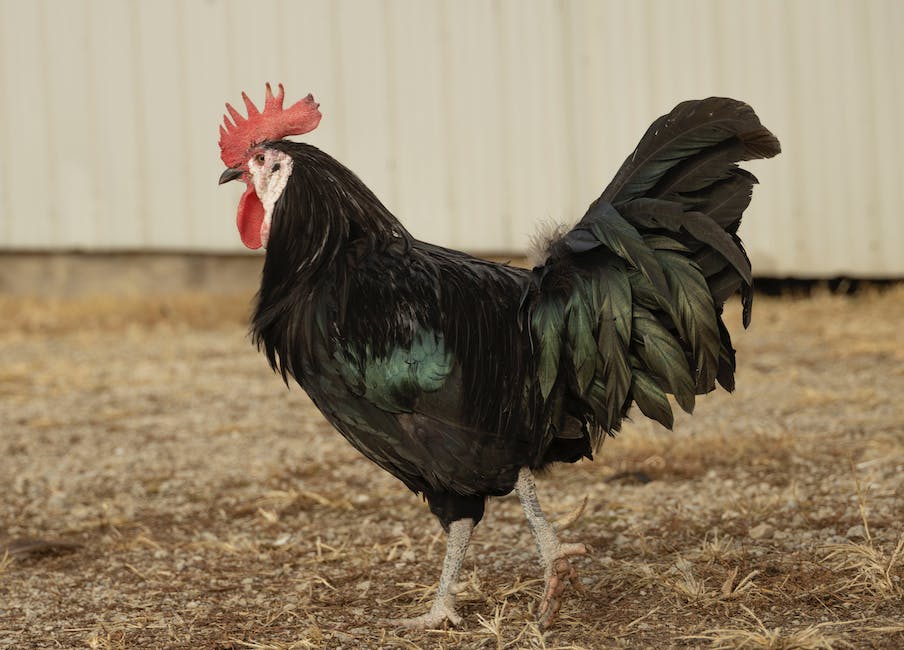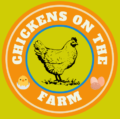We will receive a commission if you make a purchase through our affiliate link at no extra cost to you. Please read our disclosure policy for more information.
Chickens have enjoyed an elevated status in our backyards as more and more people have taken to raising these feathery, fascinating creatures for their flavorful eggs, nutritious meat, or simply companionship. Yet, the fascinating world of chicken breeds is as diverse as it is colorful. This beginner’s guide to chicken breeds is an informative overview of their origins, physical characteristics, behavioral traits, and productivity can enrich your chicken-raising experience significantly. Furthermore, choosing an ideal breed based on your specific requirements, whether tied to space, climate, purpose, or maintenance levels, can influence your journey in chicken keeping positively and profitably.
Understanding Different Chicken Breeds
The Basics of Chicken Breeds
There’s a wealth of variety when it comes to chicken breeds, each with unique physical characteristics, origins, and behaviors. Spanning the globe, these breeds can be robustly traced back to their points of origin, some capturing a piece of history within their well-preened feathers.
Rhode Island Reds
Firstly, take the Rhode Island Reds, originating from America, and recognized for their hardiness in adverse conditions. They feature a deep mahogany color with a layer of black feathers. Rhode Island Reds are larger in size and known for their exceptional egg-laying capabilities, proving to be instrumental for farm production. Behavior-wise, they are known to be friendly and self-sufficient, well-suited to either free-range or confined living.
Sussex Chickens
Another popular breed is the Sussex chicken, hailing from England. These chickens are docile and friendly, known for their exceptional laying capabilities and versatility in any setting. Physically, they can come in a wide variety of colors from pure white, red, and speckled. Sussex chickens are also renowned for their meat, making them dual-purpose birds on many farms.
Silkie Chickens
Rather unique in their appearance, Silkie Chickens have a Chinese origin. Silkies are known for their fluffy, hair-like feathers that have a silk texture. They possess a small stature but an unusually large genetic disposition towards broodiness, making them excellent mothers. This breed stands out not only for its plush appearance but also for its remarkably friendly and tame demeanor.
Plymouth Rock
The Plymouth Rock breed, commonly known as Barred Rock, is another American breed appreciated for its dual egg and meat production. With distinctive white and black striped feathers, they are quite eye-catching. In terms of behavior, they are docile and dependable, often becoming the beloved pets of many owners.
Leghorn Chickens
Originating from Italy, Leghorn chickens are a favorite of many due to their prolific egg-laying abilities. They lay white eggs and possess a small build with a wide variety of colors, the white variant being the most recognized. Although they can be flighty and less amicable than other breeds, their productivity often outweighs any behavioral downsides.
Buff Orpington
Lastly, the Buff Orpington, hailing from England, is a well-rounded breed known for both its egg-laying and meat production. With their beautiful golden plumage and ample size, they are often considered the epitome of the classic farmyard chicken. Their behavior is calm and friendly, often enjoying human company, making them a popular choice for families and small farms.
Each chicken breed comes with a set of unique traits and behaviors that are essential to understand for anyone considering a venture into poultry keeping. This knowledge will enable you to make decisions that best align with your specific needs or interests. From the Silkie Chickens, known for their excellent brooding abilities, to the Rhode Island Reds, renowned for their prolific egg-laying, each breed brings something unique to the poultry environment.

Purpose and Productivity of Chicken Breeds
Delving Deeper Into Different Chicken Breeds
The world of poultry houses a vast array of chicken breeds, each boasting unique qualities. It’s crucial to gain a thorough understanding of these characteristics when choosing a breed that aligns with your personal goals. This could be for egg production, meat production, or perhaps a mix of both.
Egg-Laying Breeds
Among the chicken breeds known to be excellent egg layers, Leghorns hold a special place. Originating from Italy, these birds are known for producing large, white eggs and possess a remarkable laying capacity of around 280 to 300 eggs per year. Leghorns do quite well in varying climates, making them a popular choice among farmers.
Rhode Island Reds, another prolific egg-laying breed, owe their names to their place of origin – Rhode Island, USA. They typically lay brown eggs and about 200 to 300 eggs annually. The eggs are large and the hens adapt well to different climates and environments.
Sussex chickens, bred in England, also make a good choice for egg production. They are hardy in colder climates and produce up to 250-275 eggs per year. Their eggs can be brown, white or tinted.
Meat Providers
If your goal is meat production, Cornish Cross breeds lead the pack. They grow quickly, often reaching butcher weight in 6 to 8 weeks. The meat is flavorful with a good feed-to-meat conversion ratio. Because of their fast growth, they are the most common breed used in commercial chicken farming in America.
Freedom Rangers are another breed suitable for meat. They grow slower than the Cornish Cross, reaching full size in about 9 to 11 weeks. This slower growth generally results in a flavorful and well-textured meat.
Dual-Purpose Breeds
For those seeking both eggs and meat from their chickens, dual-purpose breeds are a good choice. Plymouth Rocks, also known as Barred Rocks, are one such breed. They offer both a good volume of eggs, around 200 per year, and a moderate amount of meat.
Orpingtons are another strong dual-purpose choice, known for their juicy meat and steady egg-laying. Originally from England, they are quite adaptable and do well in various climates.
Adaptability
Certain breeds have proven their adaptability to various climates. The Buckeye chicken, for instance, named after the Buckeye State of Ohio, can handle a wide range of temperatures, from freezing winters to hot summers. The Australorp, a breed from Australia, also fares well in different conditions and is known for its record-breaking egg-laying capabilities.
Selecting an Appropriate Chicken Breed
Understanding the exact specifications of different chicken breeds is of utmost importance when considering which one to choose for your specific needs. Each breed varies in terms of productivity, purpose, and adaptability. By thoroughly assessing your unique requirements, it becomes easier to opt for the breed that will be most suitable for you.

Choosing the Right Chicken Breed for You
Evaluating Your Available Space
The first huddle to overcome in your journey to select the perfect chicken breed is to assess the space you have. Some chicken breeds thrive in extensive spaces where they are free to roam and forage, while others are perfectly comfortable in relatively smaller, enclosed spaces. For instance, larger breeds like the Rhode Island Red and Plymouth Rock demand more sprawling spaces as compared to the smaller bantam breeds such as the Sebright and the Silkie, which are comfortable in confined areas.
Considering Your Climate
Climate plays a significant role in breed selection. Certain breeds thrive in cold weather, while others are better suited for warm climates. For example, the Chantecler has a small comb and wattles, minimizing frostbite risk, making it an excellent choice for colder climates. On the other hand, the Leghorn, a breed with Mediterranean roots, tends to fare better in hotter temperatures. For more information about raising chickens in cold climates read – 10 Things Beginner Chicken Keepers Must Know About Winter Safety.
Identifying Purpose
Understanding the purpose of raising chickens is crucial in breed selection. If you’re after egg production, the White Leghorn is a prolific layer, known for its large white eggs. For meat production, breeds like the Cornish Cross grow rapidly and provide high-quality meat.
Some breeds, like the Orpingtons, are dual-purpose chickens, good for both meat and egg production. If you’re looking for show birds, consider breeds with distinctive looks like the Polish or the Silkie.
However, if you’re interested in keeping chickens as pets, breeds with friendly and docile temperaments, like the Australorp or the Sussex, are ideal choices.
Maintenance Level
Each breed of chicken has a different level of maintenance requirement, directly impacting your daily routine and the cost of care. Some breeds, such as the Sussex or the Australorp, are hardy and low-maintenance, perfect for beginners.
However, more exotic breeds like the Silkie or the Faverolles require more intensive care, as they are less resistant to diseases and parasites.
Certain breeds such as Leghorns, while excellent layers, are known to be flighty and may require higher fences or covered runs for security, adding to their maintenance levels.
By considering these factors, you can select a chicken breed that aligns with your space, climate, objectives, and level of commitment, ensuring a rewarding poultry-keeping experience.

So whether you have a penchant for the Plymouth Rock’s striped beauty, the Rhode Island Red’s resilience, the Leghorn’s prolific egg-laying prowess, or the Silkies’ peculiar charm, understanding the vast world of chicken breeds and their unique characteristics can significantly cater to your needs and wishes. Each chicken breed carries its own unique heritage, value, purpose, and personality. Bringing to light the aspects that best fit your requirements will only contribute to a more fulfilling, successful, and meaningful relationship with these wonderful creatures. Happy chicken keeping!
What more detail about poultry equipment? Click Here
As chicken owners, we hear a lot about the importance of providing our chickens with the proper nutrition, Click Here to lean more.




